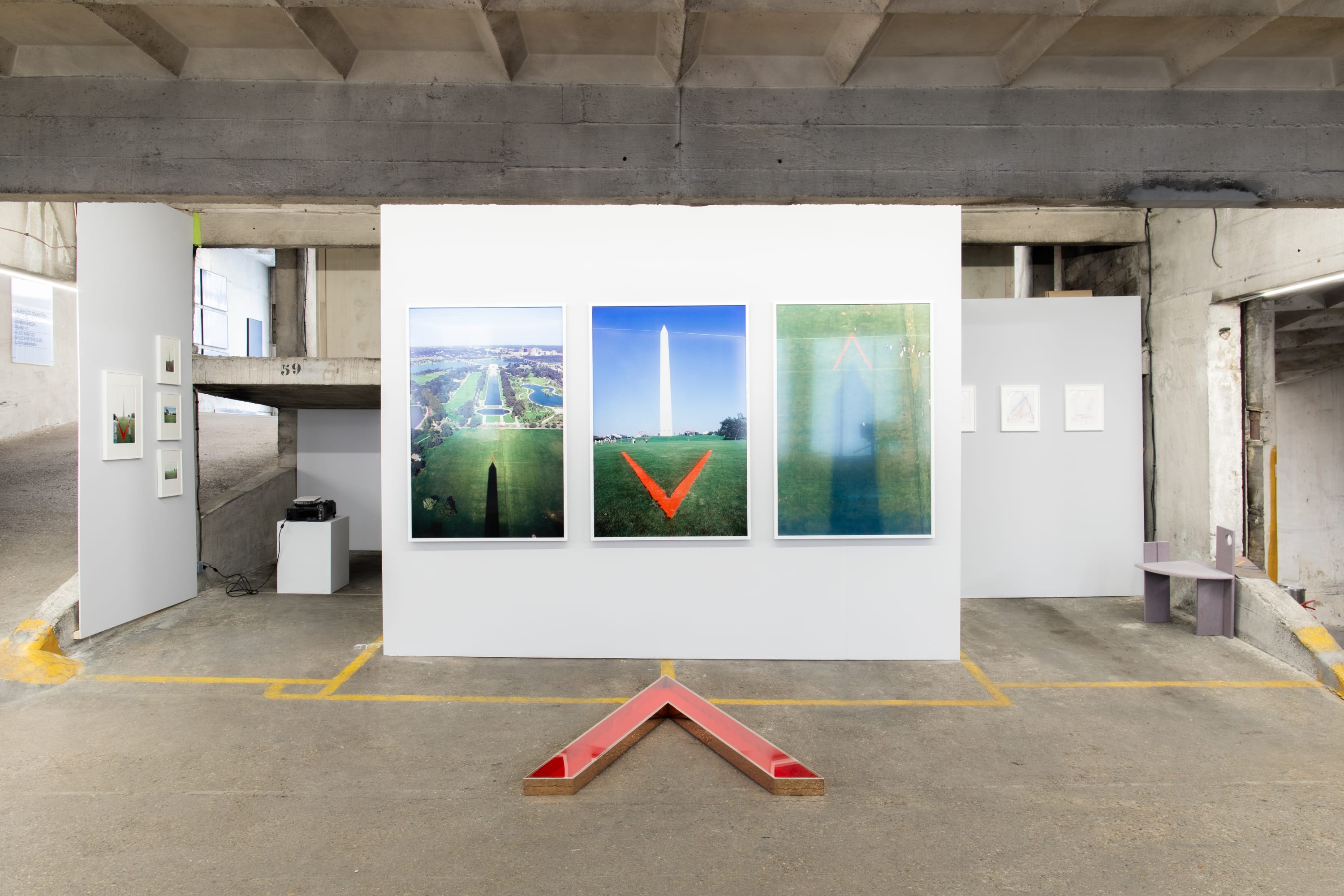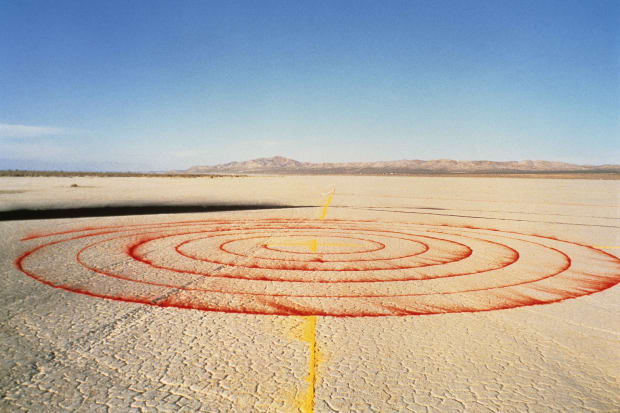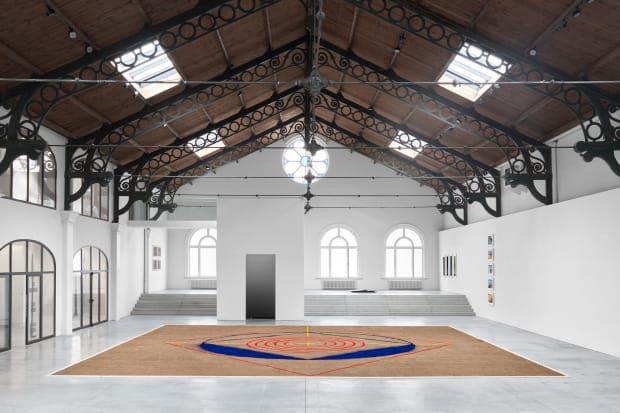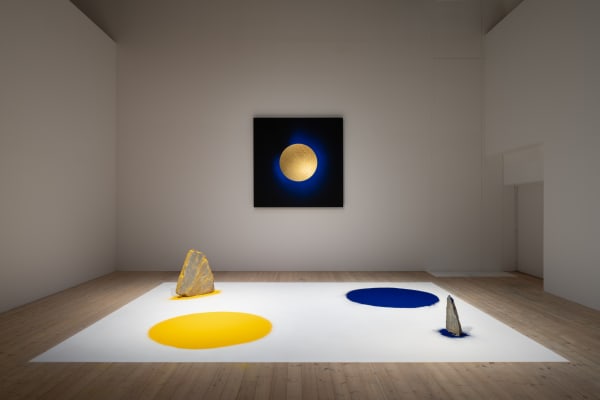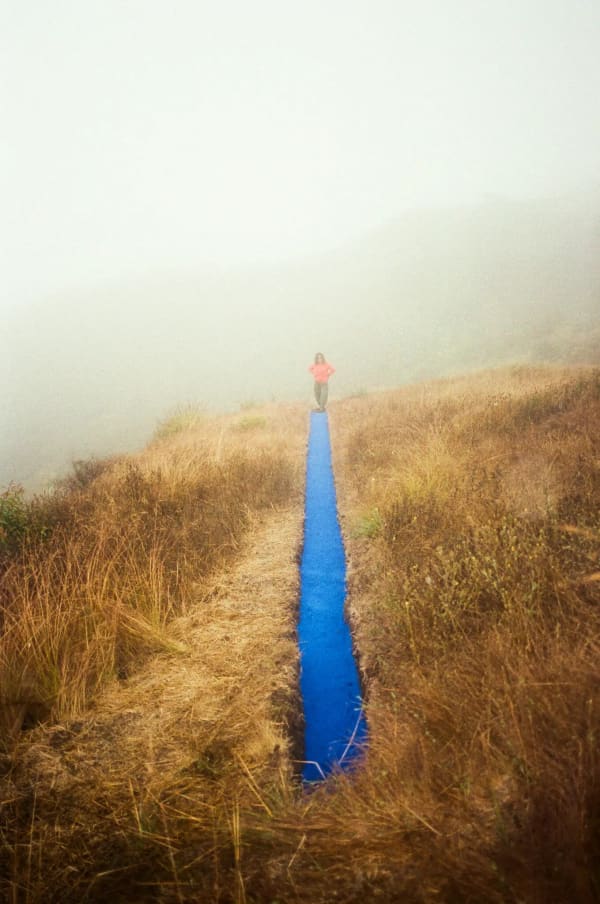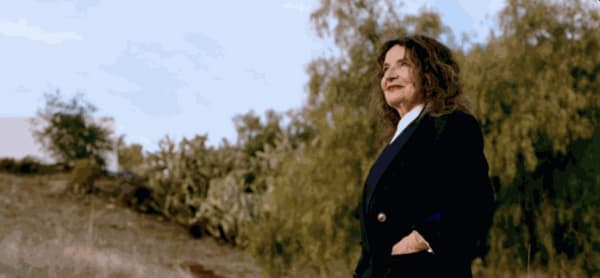-
-
“Why the monument? In a city which has come to symbolize temporal power, the monument, with its reference to Egyptian obelisks, and the pyramids, is itself the striking symbol of a different level of power, one not necessarily tied to men and governments, but to unconscious understanding of the cycles of life, from hourly movements to the passage of centuries, millenia.”
- Lita AlbuquerqueOriginal proposal document, 1980 -
In 1980 Lita Albuquerque produced The Washington Monument Project: The Red Pyramid on the National Mall in Washington, DC for the International Sculpture Conference.
-

-
-
Art historian William L. Fox describes the artist's intentional harmony with nature, the ephemerality of her interventions as well as her use of color to be part of Albuquerque’s uniquely feminist contribution to the history of Land Art. Alongside Judy Chicago and Patricia Johanson, Albuquerque’s introduction of color was “a deliberate choice to counter the monochromatic earthworks by the men,” and “feminize land art,” Fox wrote. Others would say that it is a direct confrontation with the phallic symbol of power.
-

-
The project came at a pivotal junction in the artist’s development as it is her first urban intervention that continues the dialogue between earth and the cosmos central to her oeuvre. In earlier works such as Rock and Pigment (1978) she dusted stones with pigment in expansive natural landscapes and in conversation with the heavens - stones replicated the maps of the stars. The same year she presented her renowned, Spine of the Earth in the Mojave desert, The Washington Monument Project opens the door for Albuquerque's later, well-known works such as Sol Star (1996) when she intervened near the pyramids in Giza and Stellar Axis: Antarctica (2006) created in situ at the South Pole.
-
The presentation contains a large-scale triptych of photographs (60 x 40 in each) that show the motion intrinsic to the work, exhibited with a sculpture made of copper filled and with pigment that condenses the simultaneous gravity and fragility of the intervention.
-
A series of drawings created at the time highlight the work’s philosophical underpinnings and documentation of the artist's process and a series of archival slides bring the process to life.
-
The artworks are complemented by extensive and rare documentation that survived a devastating fire in the artist’s studio in 2018, including artist texts, correspondences with scientists and authorities, design documents and plans.
-

-
The Washington Monument (1980) was exhibited in full for the first time at OFFSCREEN Paris in October 2024. The triptych and sculpture have previously been exhibited at MOCA in Los Angeles in 2010, in Groundswell: Women of Land Art at the Nasher Sculpture Center in 2023 and in the major solo exhibition Early Works at the gallery in early 2024.
The artist discussed the work and contextualized it in her larger practice in dialogue with Chris Bayley, Curator at Serpentine during OFFSCREEN's Fireside Chats program.
-
-
Learn More About The Artist

-
Lita Albuquerque (b. 1946) is a major figure in the Land Art and Light & Space Movements. She recently exhibited in the retrospective Groundswell: Women of Land Art, at the Nasher Sculpture Center, Dallas, Texas, USA (2023) and in the Light & Space retrospective at Copenhagen Contemporary, Denmark (2021).
Her works are held in numerous major collections including the collection of the Metropolitan Museum of Art, Getty Trust, the Whitney Museum of American Art, LACMA and MOCA.
-

-
-

LITA ALBUQUERQUE | GROUNDSWELL WOMEN OF LAND ART
GROUP EXHIBITION 23 September 2023 - 7 January 2024Lita Albuquerque was one of 12 female artists included in the major retrospective Groundswell: Women of Land Art at the Nasher Sculpture Center in Texas, USA. Using materials like earth,... -

LITA ALBUQUERQUE | COPENHAGEN CONTEMPORARY
GROUP EXHIBITION 3 December 2021 - 22 September 2022Lita Albuquerque was one of the artists presented in the major retrospective on the Light and Space Movement at Copenhagen Contemporary. Light & Space features both historical and new works... -

LITA ALBUQUERQUE | FRIEZE
COMMISSION 5 February 2025Lita Albuquerque presents Turbulence (2025) as part of Frieze Projects, curated by Art Production Fund, at Frieze Los Angeles 2025. A pioneer of the light and space and land art... -

LITA ALBUQUERQUE | NEW YORK TIMES
PRESS 19 June 2024In the New York Times , Jori Finkel writes on Lita Albuquerque's newly recreated Land Art work Malibu Line . Lita Albuquerque made a strange sort of painting in 1978... -

LITA ALBUQUERQUE | FINANCIAL TIMES
PRESS 14 February 2025In the Financial Times, Lucie Davies profiles Lita Albuquerque. Lita Albuquerque subverted land art’s boys club — she’s finally getting her due Perception was everything to the light & space... -

LITA ALBUQUERQUE | ARTNET
PRESS 19 September 2024Katie White profiles Lita Albuquerque in Artnet, Land Art’s Grande Dame Lita Albuquerque Is Still ‘Queen of the Now’. In 1975, Lita Albuquerque was walking through the Metropolitan Museum of...
-
THE WASHINGTON MONUMENT PROJECT: LITA ALBUQUERQUE
Current viewing_room








